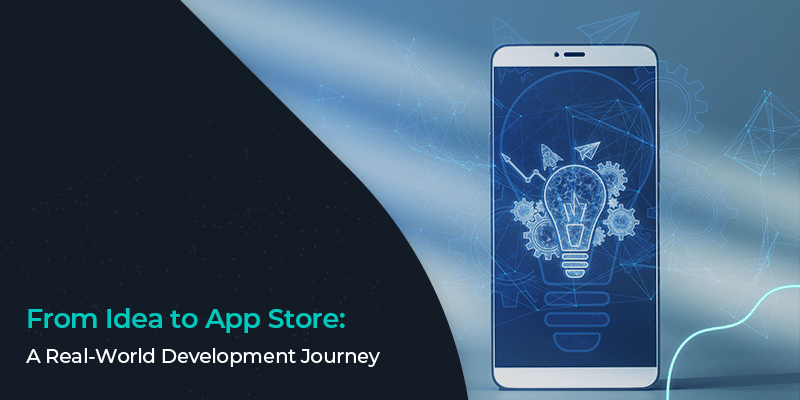It’s that enthralling yet challenging turn from a mobile app idea to creating an app that completely works and is present in the App Store. From conception to launch, it has many stages, which would involve market research, design, coding, testing, and finally, marketing. This blog would address a real-world approach to app development, with advice and best practices at every turn.
Ideation: Defining Your App’s Purpose
After the idea, a successful app is made. Give yourself the following questions about the development of your app:
- What problem does my application solve?
- Who will be interested in my targets?
- How different is my app from that which is already in the market?
Good Practices:
- Conduct market research to confirm demand.
- Create a Value Proposition Transaction that declares the unique value of your app.
- Brainstorming your initial ideas and outlining the core functionalities.
Planning & Wireframing: Structuring Your App
After all the validation processes, the next step is to conceptualize the architecture, user-flow, and functionalities of the application.
Key Steps:
- Preparation of the feature list.
- Wireframes to be designed to visualize the user experience.
- Make a project roadmap including timelines and milestones.
Best Practices:
- Use Figma/Adobe XD for wireframing.
- Keep it intuitive and with a seamless navigation flow.
- Plan for scalability and future updates.
UI/UX Design: Crafting a User-Centric Experience
The UI and UX factors are vital when considering app acceptance and retention.
Key Focus Areas
- Aesthetic Responsive Design.
- Consistency in Branding and Graphics.
- Fluid Transitions and Interactions.
Good Practices:
- Follow the rules and regulations of the specific platform (iOS Human Interface & Material Design for Android).
- Prioritize accessibility and responsiveness.
- Early user feedback.
Development: Bringing Your App to Life
The development phase entails programming the front-end (user interface) and back-end (server, database, APIs).
Key Steps:
- Selecting the appropriate technology stack (native versus cross-platform).
- Execution of core functionalities.
- Application of security and data protection.
Best Practices:
- Implement agile methodologies to enhance iterative development.
- Write clean, scalable code with good documentation.
- Optimize performance with speed and efficiency.
Testing: Ensuring a Bug-Free Experience
The method applies strenuous testing to guarantee that the application runs smoothly on various devices and OSs prior to launch.
Types of Testing:
- Unit Testing: Tests separately each component.
- UI/UX Testing: Evaluates usability.
- Performance Testing: Tests speed and responsiveness.
- Security Testing: Checks data security.
Best Practices:
- Use automation testing along with manual testing;
- Collect feedback from beta testers;
- Fix bugs and polish features before launch.
Deployment: Launching on the App Store
After suitably testing, you can now submit your app to the App Store or Google Play.
Key Steps:
- Create a mobile app developer account.
- Prepare metadata (app description, keywords, screenshots, and promotional videos).
- Adhere to submission guidelines from the places where you want to submit your app.
- Get approval and launch.
Best Practices:
- Optimize your app store listing for discoverability (ASO – App Store Optimization).
- Have a marketing strategy in place to drive downloads.
- Prepare for initial user feedback and updates.
Post-Launch: Growing and Maintaining Your App
What initiate never ends. Monitoring and upgrades are all the way up for long-term success.
Key Steps:
- Analyzing behavior of users with analytics.
- Feedback collection and improvements process.
- Marketing and scaling growth.
Best Practices:
- Perform regular updates to introduce bug fixes and new features.
- Get together with users through the support and updates.
- Continued growth by a mix of paid and organic marketing.
Conclusion: Turning Your Idea into a Success Story
It takes passion and patience to complete the long journey from an idea all the way to the App Store. Following this procedure-from idea generation to the end with post-launch-have proven to make turning ideas into successful apps more likely to have users who love them.
Anything worthwhile takes time. It requires research and endurance and the capacity to change track when necessary. Most apps go through several revisions in the course of their development before they can take a shape that can be called perfect.



